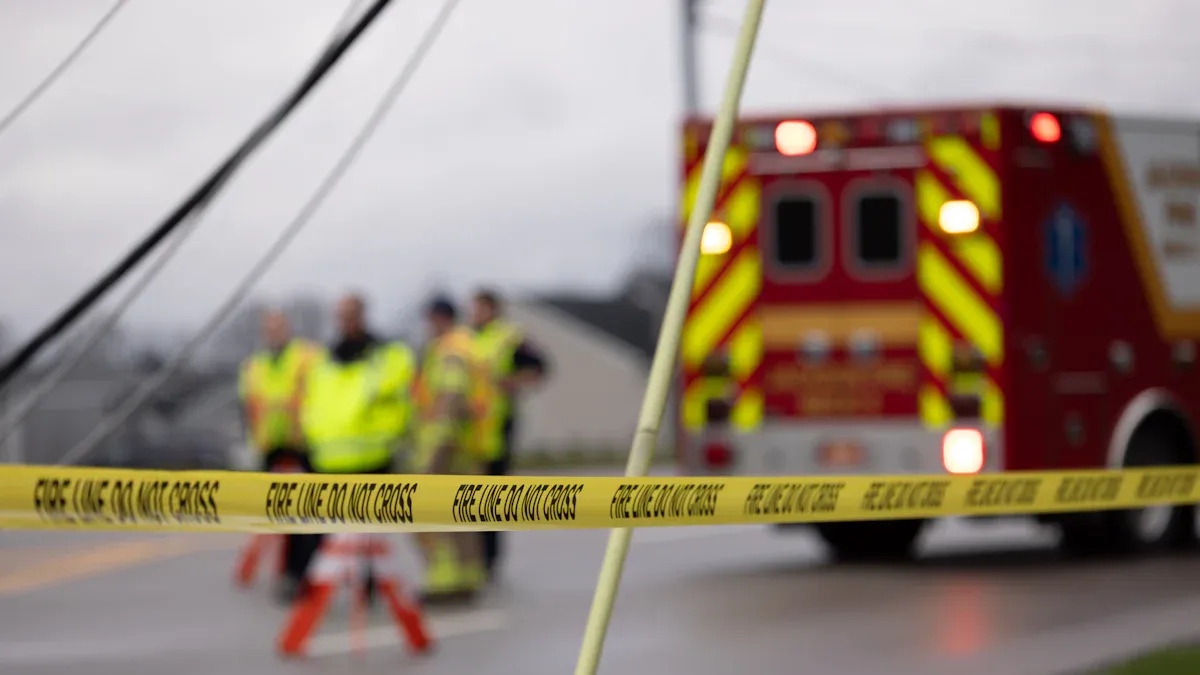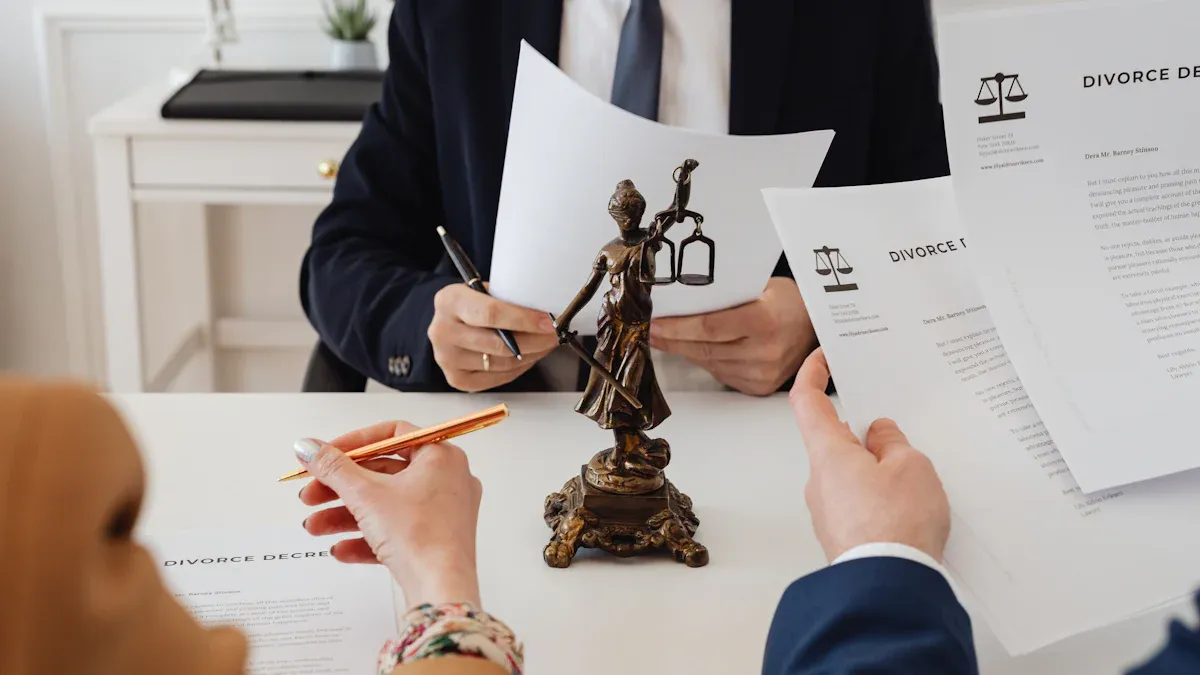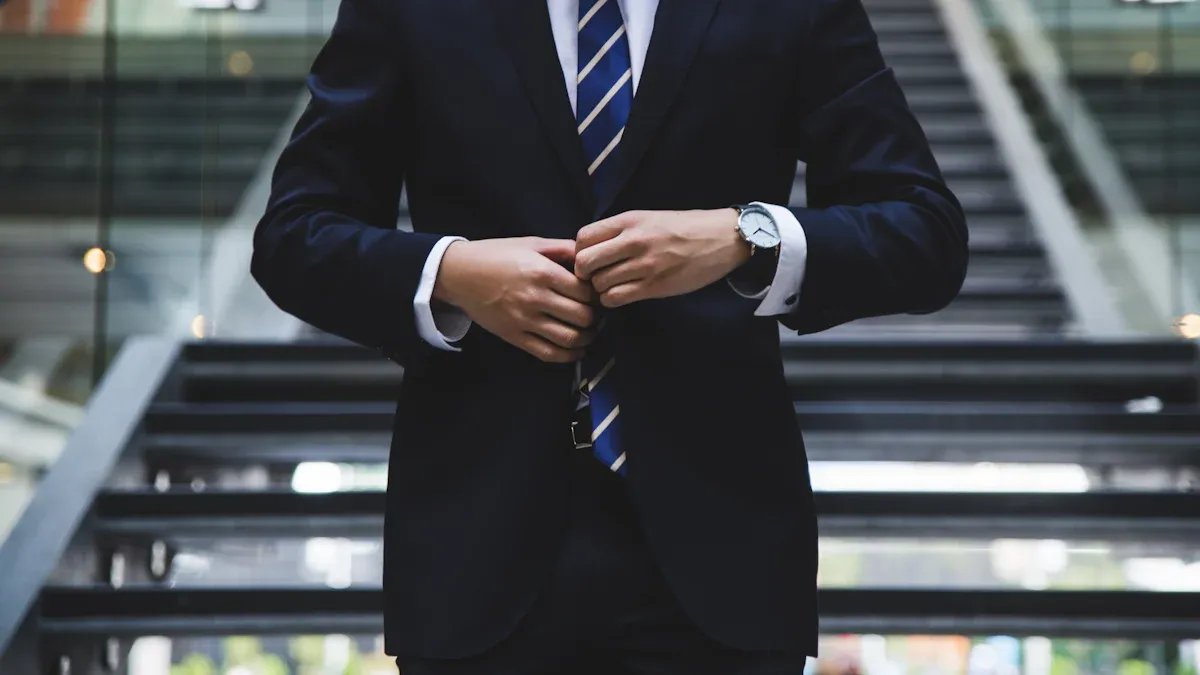Image Source: unsplash
When an accident occurs, I know how overwhelming the aftermath can feel. That’s why understanding Evidence Collection Tips in Accident Injury Claims is essential. Gathering evidence quickly becomes crucial for building a strong injury claim. Prompt documentation strengthens liability arguments and helps secure fair compensation. Missing evidence often leads to disputes with insurers, reducing payouts or causing claim denials. By following effective evidence collection tips, you can ensure better outcomes.
Key Takeaways
- Gather evidence right after the accident. Take pictures, get witness details, and save any items related to the accident to support your case.
- Write down details about your injuries and treatments. Keep medical papers and bills to show how serious your injuries are and to back up your claim for money.
- Talk to a lawyer for help with collecting evidence. They make sure your documents follow the law and help you get the most compensation.
Why Evidence Collection Matters
Proving Negligence and Liability
When filing an accident injury claim, proving negligence is essential. I always remind myself that the law requires four key elements to establish negligence:
- Duty of Care: The responsible party must have had a legal obligation to act reasonably to prevent harm.
- Breach of Duty: Their actions—or lack of action—must have failed to meet this standard.
- Causation: I need to show that their breach directly caused my injuries.
- Damages: Finally, I must provide evidence of measurable harm, such as medical bills or lost wages.
To meet these requirements, I focus on gathering strong evidence. Photos of the accident scene, dashcam footage, and police reports often help establish liability. Witness statements also provide independent accounts that strengthen my case.
Strengthening Your Claim
I’ve learned that solid evidence can make or break an injury claim. Medical records, for example, document the severity of injuries and the treatments I’ve received. Photos and videos from the scene capture critical details like vehicle positions or road conditions. Expert testimony, such as a doctor’s assessment of my injuries, adds credibility. Even repair estimates for property damage can support my claim. By collecting this evidence, I ensure my case is as strong as possible.
Avoiding Disputes with Insurers
Insurance companies often challenge claims to minimize payouts. I’ve seen how disputes arise when evidence is incomplete or unclear. To avoid this, I document the accident scene thoroughly, take photos, and gather witness contact information. Police reports also play a vital role in countering claims of fault. Consulting an attorney can further help establish liability and address any challenges from insurers. By being proactive, I reduce the chances of disputes and improve my chances of fair compensation.
Essential Types of Evidence
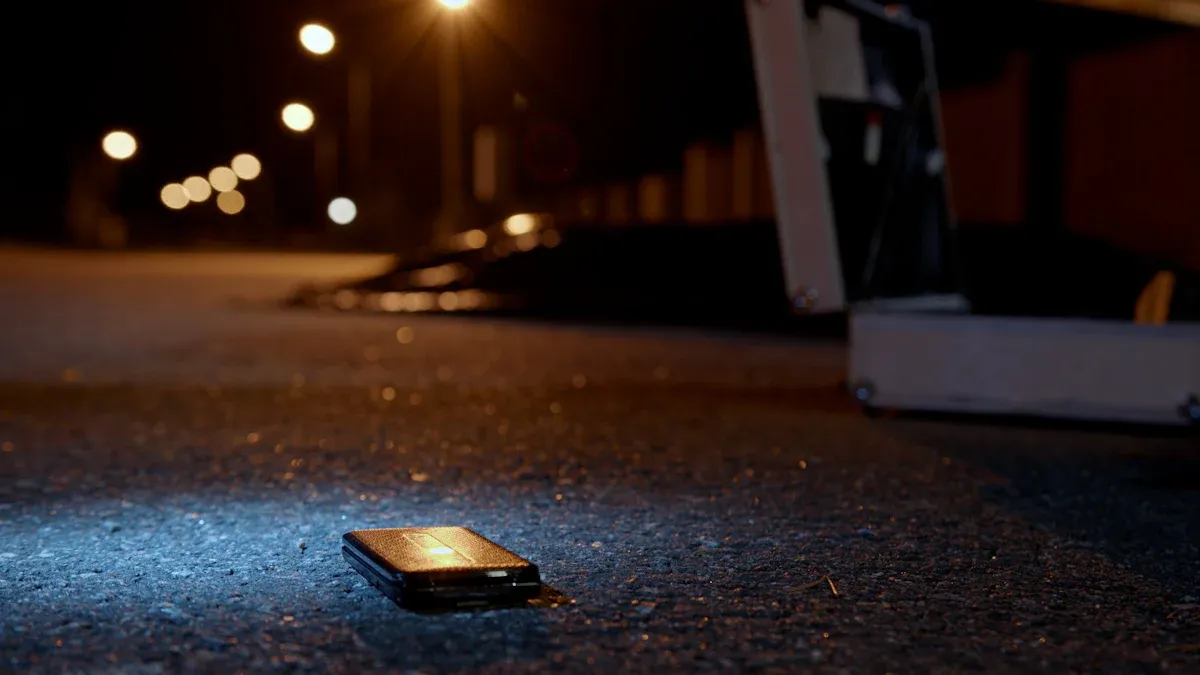
Image Source: pexels
Photographic Evidence
I always start by taking photos at the accident scene. Wide-angle shots from multiple angles help capture the entire scene. I make sure to include vehicle positions, road conditions, and any traffic signals. Close-up photos of vehicle damage and visible injuries provide additional proof. I also document weather conditions, as they can influence liability. Including time stamps on photos ensures they align with the accident timeline. These images often serve as undeniable visual evidence when filing a claim.
Medical Records and Bills
Medical records play a crucial role in proving the extent of my injuries. Emergency room reports, diagnostic tests, and doctor’s notes establish a direct link between the accident and my injuries. I also keep all medical bills and receipts. These documents reflect the economic damages I’ve incurred, which helps determine the value of my claim. Without these records, it becomes challenging to justify the compensation I deserve.
Witness Statements
Eyewitness accounts strengthen my case, especially in disputed claims. I always gather statements promptly to ensure accuracy. Witnesses often provide details I might miss, such as a sudden lane change or a driver ignoring a stop sign. Their observations about driving behavior and conditions before, during, and after the crash can establish fault. Including diverse perspectives from different angles of the accident adds credibility to my claim.
Police Reports
A police report provides an official record of the accident. It includes the date, time, and location, along with statements from drivers and witnesses. Officer observations and preliminary fault determinations often carry significant weight. I always request a copy of the report, as it helps counter disputes and supports my version of events. This document often becomes a cornerstone of my evidence collection.
Physical Evidence
Physical evidence can be just as important as photos or reports. I preserve broken objects, such as torn clothing or defective products, as they can demonstrate negligence. Vehicle parts or debris from the scene reveal the collision’s point of impact and trajectory. These items provide tangible proof that strengthens my claim. I always store them securely to ensure they remain intact.
Digital Evidence
Digital evidence, like surveillance footage, offers an unbiased account of the accident. It captures details that witnesses might overlook, such as the exact moment of impact. I often rely on this type of evidence to bolster my case. Surveillance footage can confirm my statements or challenge conflicting claims. Its objective nature makes it a powerful tool in accident injury claims.
How to Collect and Preserve Evidence
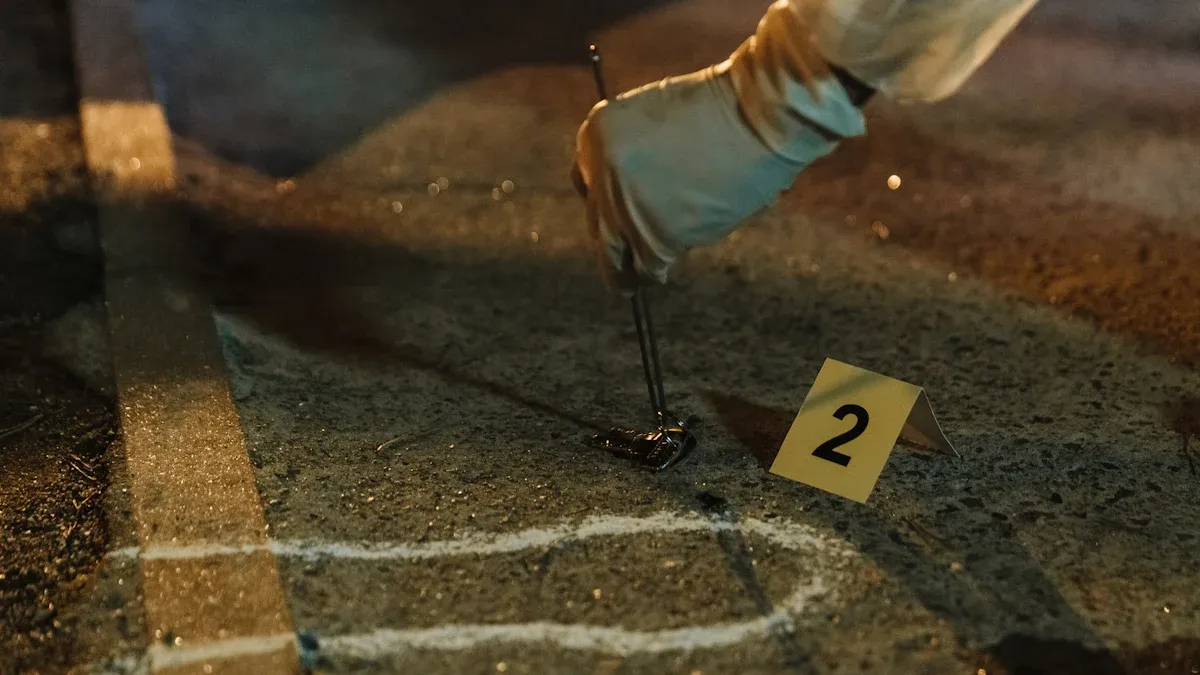
Image Source: pexels
Documenting the Scene
When I document an accident scene, I follow a step-by-step approach to ensure nothing gets missed:
- I secure the area using cones or flares to alert other drivers.
- I coordinate with emergency services to ensure everyone’s safety.
- I take wide-angle photos to capture the entire scene, including vehicle positions and road conditions.
- I focus on detailed shots of damages and injuries, making sure to timestamp each photo.
- I engage witnesses and record their observations promptly.
This process helps me create a clear and reliable account of the incident.
Securing Witness Information
Witnesses often provide valuable insights. I always collect their contact details, including names, phone numbers, and email addresses. I ask open-ended questions to gather detailed accounts of what they saw. For example, I inquire about vehicle speeds, road conditions, and the sequence of events. Verifying their identities ensures their statements hold credibility.
Keeping a Personal Injury Journal
A personal injury journal has been a powerful tool for me. I document my daily pain levels, emotional struggles, and how the injury affects my routine. This journal not only supports my claim for non-economic damages but also helps my lawyer calculate the full extent of my losses.
Storing Physical Evidence
Preserving physical evidence is critical. I secure items like damaged clothing or broken equipment in a safe place. I also photograph these items from multiple angles to show their condition. This ensures I have tangible proof to support my claim.
Backing Up Digital Evidence
Digital evidence, such as surveillance footage, can make or break a case. I always back up videos, photos, and audio recordings to multiple devices or cloud storage. This prevents accidental loss and ensures I have access to this vital information when needed.
Seeking Professional Assistance
In complex cases, I seek professional help. Attorneys and investigators know how to gather and preserve evidence effectively. They also ensure that all documentation meets legal standards, which strengthens my claim. Delaying this step can complicate the process, so I act quickly.
Common Mistakes to Avoid
Delaying Evidence Collection
I’ve learned that delaying evidence collection can harm my claim. Evidence fades quickly. Witnesses forget details, and physical evidence may get lost or damaged. For example, road conditions or vehicle positions might change within hours. I always act promptly to document the scene and gather information. Failing to do so can weaken my case and make it harder to prove liability.
Delaying medical treatment is another critical mistake. When I don’t seek immediate care, it creates doubt about the severity of my injuries. Insurance companies may argue that my injuries aren’t related to the accident. I make it a priority to visit a doctor right away and keep detailed records of all treatments.
Mishandling Evidence
Mishandling evidence can jeopardize my claim. I avoid relying on the insurance company to gather evidence because their interests often conflict with mine. Instead, I take control by collecting and preserving evidence myself.
Here are some common mistakes I’ve seen:
- Failing to collect evidence at the scene.
- Not keeping detailed records of medical treatments and expenses.
- Providing recorded statements to insurance adjusters without legal counsel.
I also ensure that physical evidence, like damaged clothing or broken items, is stored securely. Mishandling these items can lead to disputes or reduced compensation.
Overlooking Key Evidence
Overlooking key evidence can significantly weaken my case. I’ve found that certain types of evidence, like weather and road condition documentation, are often ignored but can impact the claim’s outcome.
| Type of Evidence | Importance |
|---|---|
| Weather and Road Condition Documentation | Impacts the claim’s outcome significantly. |
| Vehicle Computer Data | Contains crucial data like speed and impact force measurements. |
| Surveillance Footage | Provides vital documentation from cameras in the vicinity. |
I make sure to gather all relevant evidence, even if it seems minor. For instance, vehicle computer data can reveal critical details about the crash, and surveillance footage can provide an unbiased account of the incident.
Sharing Evidence Publicly
Posting about the accident on social media is a mistake I avoid at all costs. Insurance companies often monitor social media activity and may use my posts against me. Even innocent updates can be misinterpreted to undermine my claim. I keep all details private and share evidence only with my attorney.
Not Consulting an Attorney
Not hiring an attorney can lead to inadequate representation. I’ve seen how legal experts strengthen claims by ensuring all evidence meets legal standards. Without their guidance, I might settle too quickly or accept unfair compensation. An attorney helps me navigate the complexities of the legal process and protects my rights throughout the claim.
The Role of Legal Experts
Assistance in Evidence Gathering
I’ve realized that working with a legal expert can significantly improve the evidence-gathering process. An experienced personal injury attorney ensures that all necessary evidence is collected and presented effectively to maximize compensation. They often collaborate with specialists to strengthen my case:
- Accident Reconstruction Experts: These professionals analyze evidence and create detailed reconstructions of the incident, which are crucial for proving liability.
- Medical Experts: They provide professional opinions on the cause of injuries, their long-term effects, and the prognosis.
- Financial Experts: They calculate future medical expenses or loss of earning capacity, helping to determine the full value of my claim.
This team effort ensures that no critical detail is overlooked.
Ensuring Legal Standards
Legal experts also ensure that all evidence meets the required legal standards. I’ve learned that this step is vital for building a credible claim. They focus on gathering:
- Medical records that document diagnoses, treatments, and long-term health impacts.
- Physical evidence like photos, videos, and witness statements from the accident scene.
- Expert testimony from medical professionals to validate my injuries.
Additionally, they secure police reports and surveillance footage, which provide an official and unbiased account of the accident.
Building a Strong Case
Attorneys use strategic methods to build a compelling case. They conduct thorough investigations, gather medical records, and interview witnesses to obtain detailed accounts. They also:
- Include accident reports and organize evidence for easy reference.
- Use photos and videos to visually demonstrate injuries and property damage.
- Collaborate with experts, such as engineers or accident reconstruction specialists, to establish liability.
By presenting evidence clearly and consistently, they ensure my case is as strong as possible.
Navigating Legal Processes
Navigating legal processes can feel overwhelming, but legal experts simplify the journey. They guide me through essential steps, such as:
- Documenting the incident with photos, witness information, and a detailed account.
- Seeking medical attention to ensure proper treatment and secure medical records.
- Filing a claim with the relevant party or insurance company within the required deadlines.
Their expertise ensures that I meet all legal requirements and avoid costly mistakes.
Collecting evidence promptly and thoroughly plays a vital role in accident injury claims. Detailed photos of damages, weather conditions, and time-stamped records create a strong foundation for proving liability. These steps not only support your case but also enhance negotiations with insurers. Legal experts ensure all evidence meets standards, strengthening your claim. Seeking their guidance protects your rights and maximizes compensation.
FAQ
What should I do immediately after an accident to collect evidence?
I always prioritize safety first. Then, I document the scene with photos, gather witness information, and secure physical evidence like damaged items or debris.
Tip: Use your phone to take time-stamped photos for accuracy.
How can I ensure my evidence remains valid for my claim?
I store physical evidence securely and back up digital files. Keeping everything organized ensures nothing gets lost or damaged during the claims process.
Do I need an attorney to handle my evidence?
Yes, I recommend hiring an attorney. They ensure evidence meets legal standards, strengthen your claim, and help navigate complex legal procedures.
Note: Legal experts often collaborate with specialists to build a stronger case.
